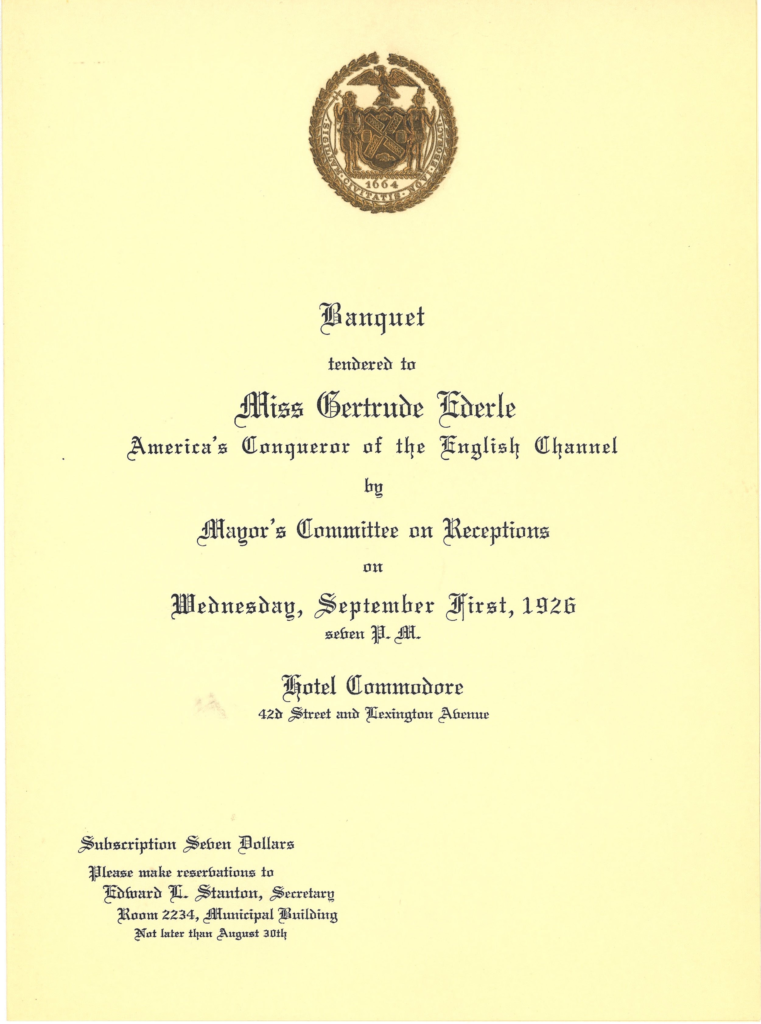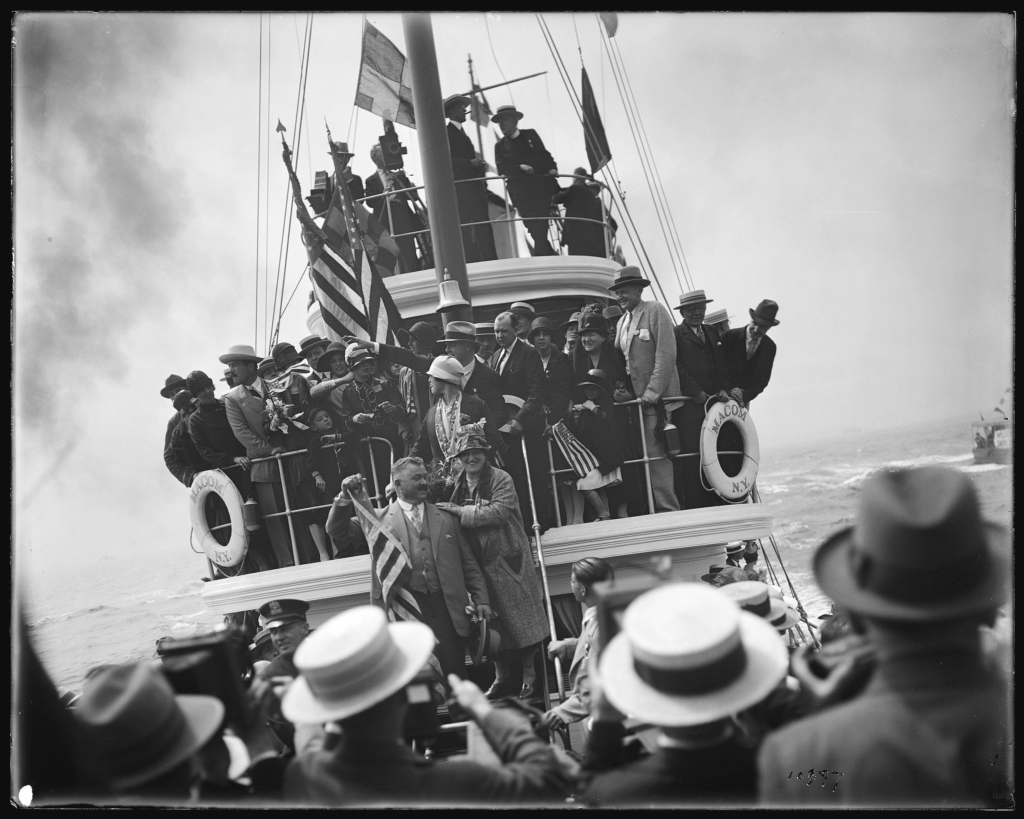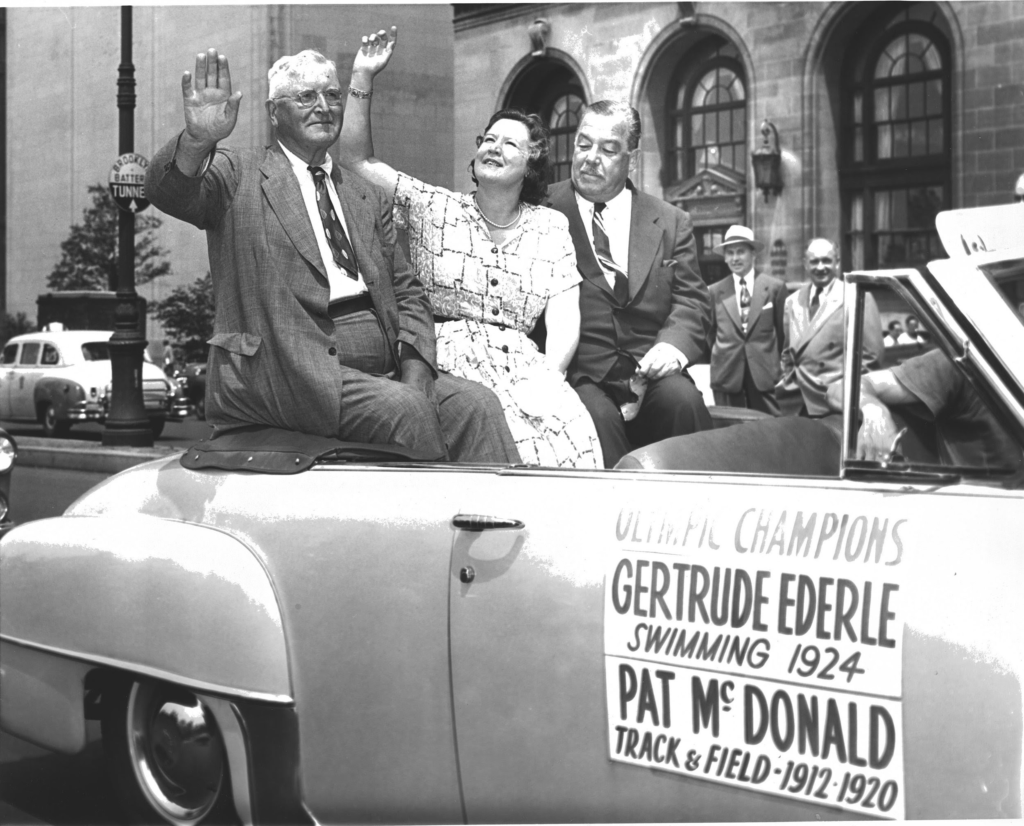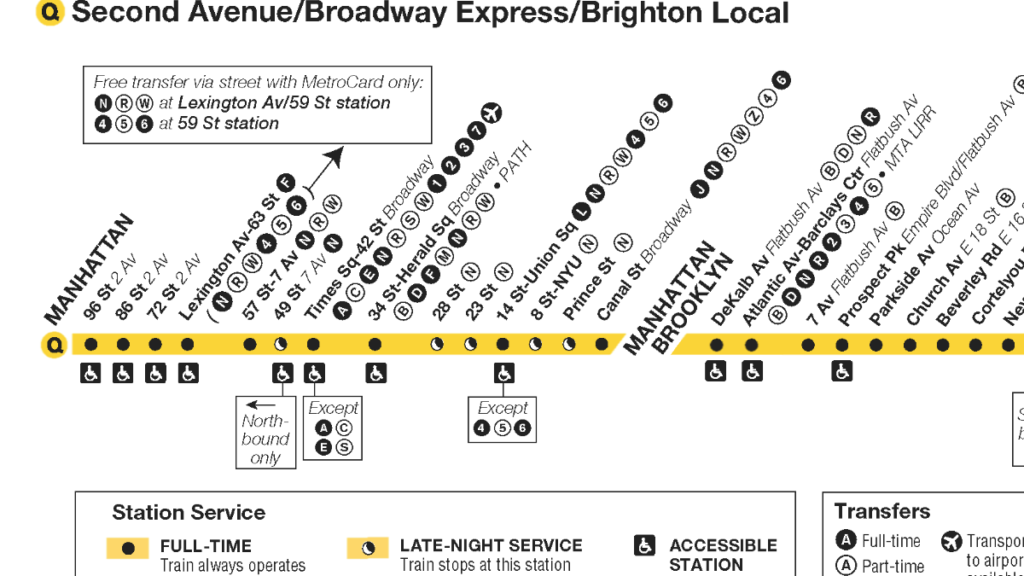Thursday, August 31, 2023 – GERTRUDE EDERLE CAME TO CELEBRATE IN NEW YORK


VACATION TIME
WE WILL BE TAKING A WELL NEEDED VACATION FROM SATURDAY UNTIL SEPTEMBER 18TH. THESE LAST FEW WEEKS HAVE BEEN EXHAUSTING. WHILE NOT A REPORTER, I FEEL OBLIGED TO GIVE INFORMATION ON THE SUBWAY PROJECT AND RIOC’S MESSAGING.
AS I WRITE THIS THE “BLUE MOON” IS RISING TO THE EAST.
SEE YOU SOON, JUDYB

FROM THE ARCHIVES
THURSDAY, AUGUST 31, 2023
Perseverence:
Gertrude Ederle Swims the
English Channel
Kenneth R. Cobb
ISSUE# 1075
August 11, 2023
Perseverence: Gertrude Ederle Swims the English Channel
New Yorkers are known for their perseverance. During the hot summer months, residents have endured polluted waters, jellyfish, riptides, lifeguard shortages, and most recently, shark attacks, when searching for somewhere to enjoy a cooling swim. On August 27, 1926, almost one century ago, the city celebrated the perseverance of 19-year-old New York-native Gertrude Ederle, for swimming across the English Channel. Her 14-hour, 31- minute time beat the five previous successful crossings, all made by men, and was not bested until 1964. Ederle’s accomplishment inspired countless female athletes and brought her world-wide fame, far greater that the accolades she received for winning three swimming medals in the 1924 Olympics.

Invitation to Banquet at Commodore Hotel, September 1, 1926. Mayor’s Committee on Receptions to Distinguished Guests Collection. NYC Municipal Archives.
Soon after news of Ederle’s swimming triumph in England on August 6th reached the city, Mayor James Walker asked Grover Whalen, Chairman of the Mayor’s Committee on Receptions to Distinguished Guests, to welcome her home with a ticker-tape parade. While not credited with inventing the ticker-tape parade, Whalen perfected the unique New York-celebration and presided over some of the most iconic parades for notable achievements—most famously, Lindbergh’s transatlantic flight in 1927.
Ticker-tape parades may appear spontaneous, i.e. the honored guest rides in an open limousine up Broadway from the Battery to City Hall for an official welcome by the Mayor, showered by shredded paper and confetti (or in the pre-digital age, ticker-tape), along the way. Examining Whalen’s records shows that staging a ticker-tape parade was anything but spontaneous. The Municipal Archives collections include the files Grover Whalen created during his multi-decade career as the City’s official greeter. The eight folders generated for the Gertrude Ederle celebration are a good example.
After receiving the green-light from Mayor Walker, Whelan assembled a committee with representatives from city departments (Police, Fire, Docks, Street Cleaning, and Plant & Structures), news media, and people from organizations relevant to the honored guest. For Ederle, this included many athletic clubs and groups such as the New York Athletic Club, Millrose Athletic Club, and the Women’s Swimming Association.
Letter to Grover Whalen, Chairman Mayor’s Reception Committee, from Women’s Swimming Association, August 20, 1926. Mayor’s Committee on Receptions to Distinguished Guests Collection. NYC Municipal Archives.
Although Whalen and his committee could take advantage of the several-day ocean voyage before Ederle returned to America, they needed to move quickly. He summoned committee members by telegram and held the first meeting on Monday, August 23. The “Minutes of the Meeting” are included in his files. Whalen opened the meeting: “We have come together this afternoon on a very interesting and, I am sure, a very pleasing occasion – to plan for the welcome of one of New York’s own…”. But then he added, “I am sure that we all feel very proud of Gertrude, and we call her by her first name because we feel that she is very close to us and because she has done so much to make us realize that after all young womanhood today [is] not giving all of its time to smoking and drinking.” The surviving records do not say what prompted that statement.
Whalen then turned to the purpose of the meeting and noted that the U.S. Treasury Department had kindly consented to “permit Miss Gertrude Ederle and party to leave the S. S. Berengaria at quarantine” and bypass immigration protocols.

Gertrude Ederle, at center standing behind her father (with flag) and mother aboard the Macom, August 27, 1926, photographer: Eugene de Salignac. Department of Bridges Plant & Structure photograph collection. NYC Municipal Archives.
Whalen’s files show that within two days he and the committee had finalized a timeline for the event on August 27. It would begin at 9 a.m. when the committee and members of the Ederle family were instructed to assemble at Pier A, and board the steamer “Macon,” [a city-owned vessel]. By 10 a.m. they expected to tie up alongside the S.S. Berengaria, bring Ederle aboard the Macon, and return to the Battery for the start of the parade at 11:45. The procession would reach City Hall by 12:15, and after the formal ceremonies, hosted by the Mayor, “Miss Ederle will be escorted to her home on Amsterdam Avenue.” The following week, on September 1, Mayor Walker planned a formal dinner at the Commodore hotel for Ederle, her family and invited guests.
Whalen’s correspondence includes a letter from Charles A. Oberwager, President of the United German Societies of the City of N.Y. Mr. Oberwager was also apparently a City Magistrate and used his official stationery for the correspondence. Oberwager wrote: “The German Americans of New York City are keyed up to the highest pitch; their enthusiasm for Miss Gertrude Ederle of New York knows no bounds and thousands of men and women are eagerly awaiting the moment to greet her upon her arrival here and to cheer her to the echo.” He then listed no less than fifteen special “requests” such as, “. . . if in or about the City Hall there should be decorations containing flags of foreign nations, that the German flag be also displayed.” And, “. . . a number of ladies, not more than twenty-four, be permitted to wear sport caps, black skirts and white sweaters.”
A carbon copy of Whalen’s response is also in the file. Whalen politely acknowledged Oberwager’s enthusiasm but also let him know that “. . . We plan to welcome Miss Ederle . . . first as an American citizen and secondly as a New York girl whose marvelous achievement in conquering the English Channel has brought to her country, her city and to her people untold glory.” He added “. . . since the official escort must represent the spirit of the City, only the American and municipal flags may be carried.”

Gertrude Ederle joined Track & Field Olympic athlete Pat McDonald (left) and Grover Whalen (right) in the ticker-tape parade for the 1952 United States Summer Olympic Team, July 7, 1952. Mayor’s Reception Committee photograph collection. NYC Municipal Archives.
Gertrude Ederle’s day proceeded as planned. When asked why she undertook the swim, she said she wanted to bring honor to the United States. She also added that her father had promised her “a small roadster” if she succeeded. After losing her hearing in 1930 and suffering a debilitating back injury in 1933, she spent many years teaching deaf children to swim. Gertrude Ederle died at age 98 on November 30, 2003.
Many years later, Grover Whalen wrote in his autobiography, Mr. New York [G. P. Putnam’s Sons, New York, 1955] about receptions he organized and said that there had been so many only a few stood out in his memory. And one that did was Gertrude Ederle’s welcome parade. “Well do I recall that day in August of 1926 when all New York turned out to welcome home the first women to swim the Channel.” He recalled that the Police Department had underestimated the crowds that would turn up for the event. “After the official ceremony Mayor Walker escorted Trudy to the front steps of City Hall in response to the request of the press for a picture. They did not tarry there long, however. A tidal wave of citizenry burst upon them. One burly patrolman rushed to Trudy’s rescue, lifted her bodily, and carried her back inside City Hall. Two other policemen ran interference for the slim Mayor, one on either side of him, and finally got him back into the building.”
Just two weeks after Gertrude Ederle enjoyed her triumph, on September 10, 1926, the City held a ticker-tape parade for another cross-channel swimmer, Mille Gade Corson. Billed as the “First Mother and Second Woman to Swim the Channel,” the 27-year-old Danish-American Corson explained her motivation: “I’ve got to make some money for my kids.”

NOW IN EFFECT
THE SHUTTLE OPERATES 5 A.M. TO MIDNIGHT DAILY
The “F”SHUTTLE TRAIN WILL ONLY RUN BETWEEN 21 ST/QUEENSBRIDGE, ROOSEVELT ISLAND TO LEXINGTON AVE./63 ST. STATIONS. THERE IS ONE “F” SHUTTLE TRAIN ON ONE TRACK GOING BACK AND FORTH FROM 5 A.M. TO MIDNIGHT DURING THE WEEK.
TIMES TO REMEMBER:
F SHUTTLE DEPARTS ROOSEVELT ISLAND STATION EVERY HOUR ON THE:
:02 PAST THE HOUR
:22 PAST THE HOUR
:42 PAST THE HOUR
RETURNING
F SHUTTLE DEPARTS 63 ST/ LEX STATION EVERY HOUR ON THE:
.10 PAST THE HOUR
.30 PAST THE HOUR
.50 PAST THE HOUR
THERE ARE NO TRAINS GOING EAST TO QUEENS AFTER QUEENSBRIDGE. THERE ARE BUS CONNECTIONS FROM THAT STATION OPERATED BY THE MTA.

Q TRAIN CONNECTIONS AVAILABLE FROM 63/LEX STATION SOUTHBOUND
Q TRAIN TO 57 STREET & 7 AVENUE
Q TRAIN TO 42 STREET TIMES SQUARE (CONNECT HERE TO F TRAIN VIA PASSAGE)
Q TRAIN TO 34 STREET (CONNECT HERE TO F TRAIN)
Q TRAIN TO 14 STREET UNION SQUARE
Q TRAIN TO CANAL STREET (OVER MANHATTAN BRIDGE TO BROOKLYN)
Q TRAIN CONNECTIONS AVAILABLE FROM 63/LEX STATION NORTHBOUND (72 ST., 86 ST., 96 ST AT SECOND AVENUE)
- Overnights between midnight and 5 a.m., F shuttle train service is suspended and free Q94 shuttle buses will connect the Roosevelt Island, 21 St-Queensbridge, and Queens Plaza stations. These are MTA buses.
THURSDAY PHOTO OF THE DAY
SEND YOUR RESPONSE TO:
ROOSEVELTISLANDHISTORY@GMAIL.COM

WEDNESDAY PHOTO OF THE DAY
THE ANSONIA , BROADWAY AT 74 sT.
ANDY SPARBERG, ARON EISENPREISS AND JOYCE GOLD ALL GOT IT RIGHT.
JOYCE GOLD WILL OFFER A TOUR OF THE AREA:
The building is the great Ansonia. I’m leading a walking tour with it on Tuesday, October 3 TUESDAY 11 AM to 1 PM $25/$20 FAR WEST 70s—THE APTHORP, THE ANSONIA, AND THE ANCRONIA MEET: 160 W. 71st St., just east of Broadway. Subway: #1, #2, #3 to W 72nd St. Station. No reservations needed.

Text by Judith Berdy
Thanks to Bobbie Slonevsky for her dedication to Blackwell’s Almanac and the RIHS
NEW YORK ALMANACK
JUDITH BERDY
KENNETH COBB
NYC MUNICIPAL ARCHIVES
Thanks to Deborah Dorff for maintaining our website
Edited by Melanie Colter and Deborah Dorff
MAYA LEVANON-PHOTOS TIK TOK & INSTAGRAM
All image are copyrighted (c) Roosevelt Island Historical Society unless otherwise indicated
www.tiktok.com/@rooseveltislandhsociety
Instagram roosevelt_island_history
THIS PUBLICATION FUNDED BY DISCRETIONARY FUNDS FROM CITY COUNCIL MEMBER JULIE MENIN & ROOSEVELT ISLAND OPERATING CORPORATION PUBLIC PURPOSE FUNDS.


Copyright © 2022 Roosevelt Island Historical Society, All rights reserved.Our mailing address is:
rooseveltislandhistory@gmail.com

Leave a comment